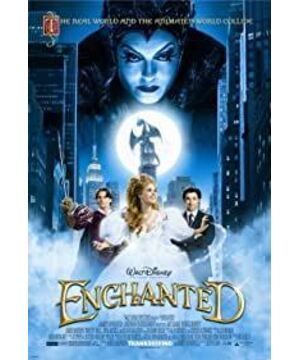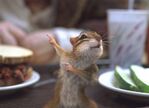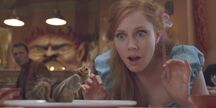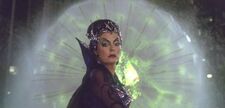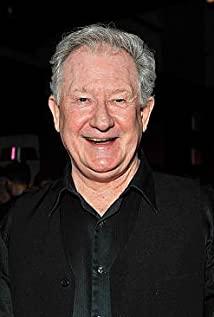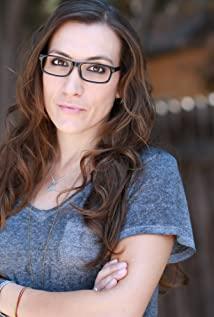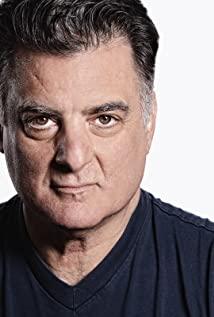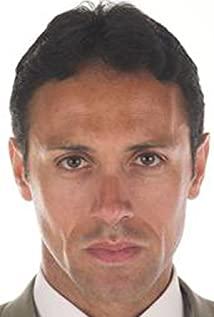Seeing this, I am not worried at all-because in the finale, the happy lovers will definitely return to the palace hand in hand, overthrow the evil queen, hold a grand wedding, and become a happy king and queen forever. This is the oldest and traditional fairy tale.
The only problem is that the Queen sent Giselle to a place where there is no "forever happy" - New York.
In this "terrible" city, Giselle was robbed of her headgear by the old man on the road, and was regarded as an idiot by pedestrians on the street, with no relatives and no common sense, and her animal companions were dirty mice, Oily cockroaches, swarms of flies and pigeons. In this real city, a six-year-old girl knows that "there is only one thing in a boy's mind", and what a father buys for his daughter is "The Greatest Woman" instead of a fairy tale book.
The protagonist, Robert, is a lawyer who witnesses failed marriages and sees how those who have lost their love are chattering and fighting over everything. He has experienced emotional setbacks, only believes in rational love that has been studied step by step for five years, and believes that the development of relationships should be as correct and safe as engineering.
Therefore, when the perceptual and naive Giselle was accidentally taken in by Robert, two people who stood on opposite sides of fairy tales and reality, the biggest conflict of the script appeared. There is no doubt that Giselle and Edward, who sing and dance in love and believe in "true love's kiss", have become big fools in the real world - their love at first sight is exactly the kind that people have long since stopped believing. Here, Edward's bravery becomes a laughing stock, Giselle's innocence is regarded as hypocritical, Robert insists on rational love, but his girlfriend Nancy longs for romantic love.
However, the contradictory Giselle and Robert gradually have a subtle feeling for each other, and they dare not break the rules of the two worlds to come together, and they will be full of regrets. Fortunately, there is still a masquerade party, witches, poisonous apples, dragons, and crystal slippers—the most common elements in traditional fairy tales are combined, and finally a lover dances in an embrace and whispers a love song in his ear. It's time to be brave, to be conscious, to be conscious, and to be romantic at first sight. A lively climax still gives a happy answer - a lover will eventually get married.
As the originator of animated cartoons, Disney, which has countless classics, is on the decline. All the top-selling 3D animations are the work of its Pixar studio, but with the separation of the two, under the pressure of competitors such as Warner and DreamWorks, Disney's prospects are worrying.
At this time, Disney produced such a creative combination of live action and animation. Imagine what would happen if a princess from a fairy tale world fell into a real-world New York? In the real world, the princess still has the magic of the fairy tale world -- animals come from all over to dance with her when she sings -- imagine what it would be like in New York. "Snow White", "Sleeping Beauty", "Dragon's Tale", "Cinderella"... The bridges of the old classic animation are constantly being staged in Manhattan, New York. The demeanor and expressions of the 2D animated characters, the "conventional" plot of the prince saving the princess, the rich singing and dancing, and even the opening words "Once upon a time..." and the closing words "They lived happily ever after..." are the same. Words have not changed. This is a kind of self-confidence, self-confidence and calmness in the countless classics and brilliant achievements of more than half a century.
Disney animation has always used singing and dancing as its strengths. This film moves singing and dancing from animation to reality, and singing and dancing are also the most prominent part of the whole film. Three of the songs "Happy Working Song", "So Close" and "That's How You Know" also won three seats in this year's Oscar nominations for Best Original Song, which shows Disney's strength in this regard.
Long before the release, Disney has been frank about its desire to "prepare to serialize Enchanted", and is full of confidence in its box office success. "Enchanted" really lived up to expectations, and the final box office reached $339,906,877. The film review also has a good score of 75 points overall. The English name of the film is "Enchanted", which can be understood as "enchanted", "intoxicated", and "inextricable ecstasy". Just like the title, "Magic Romance" has made American audiences intoxicated and immersed in it. It was hard to extricate itself from the ecstasy; it seemed to have cast a spell on the critics, and received an undifferentiated warm welcome.
Well-known magazines have commented on "perfectly deconstructing and rebuilding the Disney animation worldview so far, and successfully cooking up a top-level entertainment blockbuster", "warm and handy nostalgia, sweet and energetic romance, and sharp spoofs that have things. The spirit, under the ingenious weaving of the director, forms a heaven and earth network that firmly traps the audience's heart", "humorous but always approachable dialogue, fantasy but gorgeous and realistic world view, let the film get rid of 'pediatrics' and easily bring spectators into", " On the basis of the live-action modeling that perfectly matches the animated characters, the powerful performance lineup is endowed with cartoon-specific body language and light singing and dancing in a cute and unpretentious manner"...
Why is Disney so successful? I think a good IP is essential to its success.
The development of society and people's hearts has reached a certain stage, and entertainment has become an indispensable placebo and spiritual opium in our lives. Therefore, the commercialization of art is the inevitable way. The Disney company provides a very good method, which is to carry out a harmonious integration of business and art, and excellent film works can also be produced according to industrial standards. Take Disney as an example, IP is the key to its survival and development. Just look at the box-office hits of Rapunzel, Frozen, Super Marines, and Zootopia that swept the world.
IP stands for "Intellectual Property". Not all "intellectual property" has the potential to be developed into a film project: for any story to be presented on the big screen, it must be "filmable" (translatable into the visual language of the film), "financeable" ( Some people are willing to invest), "marketable" (with enough selling points), "viewable" (the theater is willing to arrange films, and the audience is willing to buy tickets). These elements complement each other, cause and effect each other, and are indispensable.
Relevant media have counted all the feature-length animated films that Disney has produced since 1937. Let’s take a look at where Disney’s super IPs come from:
Through the above form, it is easy to discover Disney's intelligence and ambition: take a magnifying glass to search for super big IPs around the world, keep them for themselves, create classics with painstaking efforts, and exhaust their development capabilities.
From the classic fairy tales of Hans Christian Andersen and the Brothers Grimm, to King Arthur and Merlin ("Sword in the Stone")); from the literary masterpieces "Hamlet", "Notre Dame" and "Oliver Twist" to the well-known musical works of world music masters; the occurrence of the story From New York to metropolises such as London, Paris, Tokyo; from the stories of distant times to modern stories; from the real historical figures and stories such as the Indian princess Pocahontas rescues the British explorer (Pocahontas) To the unpredictable future world and the imagined magical world; from the African jungle ("Tarzan"), to Latin America ("The Three Horsemen", the ancient north of China ("Mulan")... This has become an important reason for Disney's global cultural influence.
Among the above 56 animated feature films, the story of the prince and princess appeared in more than 10 works, such as "Snow White and the Seven Dwarfs", "Snow White and the Seven Dwarfs" "Sleeping Beauty", "The Little Mermaid", "Beauty and the Beast", "The Princess and the Frog", "Enchanted", "Frozen", production years from 1937 to 2016, although all prince and princess stories , and even some bridges and story settings are similar, but the expression methods are different, and the production techniques are also different. Each has its own dramatic conflict and way of resolving conflicts, so it has become an eternal theme for Disney. I believe that future Disney animations There will still be such stories.
The United States does not have a long history and cultural traditions like China, India, continental Europe, countries, nor does it have as many stories and material accumulation as these countries, but what Americans are best at is "Inclusiveness" and "integration", you can say that it is culturally domineering and "acquisitive", but we are deeply influenced by American culture between "willingness" and "no other way". , McDonald's, Starbucks, Disney is also an American cultural symbol that affects the world. It is "borrowing other people's stories and saying their own thoughts"
Disney adapted the Arabic folktale "Aladdin" to give it American humor. The elves in the film sometimes imitate Woody Allen, sometimes Forrest Gump and Elvis, which makes people laugh, and the same is true for the Chinese film "Mulan". Disney added Mulan's patron saint, Mushu, to the film, a small figure who was in charge of beating the gong in the ancestral hall of the Hua family. Mushu is a little dragon with the body of a small lizard. Because he helped Mulan on the battlefield, he was promoted to the patron saint in the ancestral hall after returning home. The role of Mushu, from being "rejected" to "making great achievements", is an example of the classic American-style small person's counterattack, and the idea conveyed by "Mulan" is nothing more than the same: the emperor said: "I listen to you. I told you about you, Hua Mulan, you stole your father's armor and left without saying goodbye, disguised as a man, joined the army in your father's place, deceived the barracks commander, shamed the soldiers, and destroyed my palace... and, you Save us all!" The emperor then bowed to Mulan. What a modern, what an American story.
Therefore, one of the reasons why Disney has achieved what it is today, and cast a huge and far-reaching entertainment business empire, is one of the reasons for the emphasis on creativity and the importance of each excellent IP. "Magic" reflects this.
The animation clip at the beginning is no different from the fairy tale world we imagined, the princess who can sing, the prince on a white horse, the evil stepmother queen, a group of ghostly animals, a foolish and loyal minister, and Happy Ending who is always happy—— These are enough for Green and Andersen to write countless short stories. Enough, enough, these clichéd, preschooler-only tales we've long despised, even subversive dark versions.
However, the Disney film was neither Grimm nor Hans Christian Andersen. So, I am very fortunate to see this story of the blending of fairy tales and reality.
View more about Enchanted reviews


